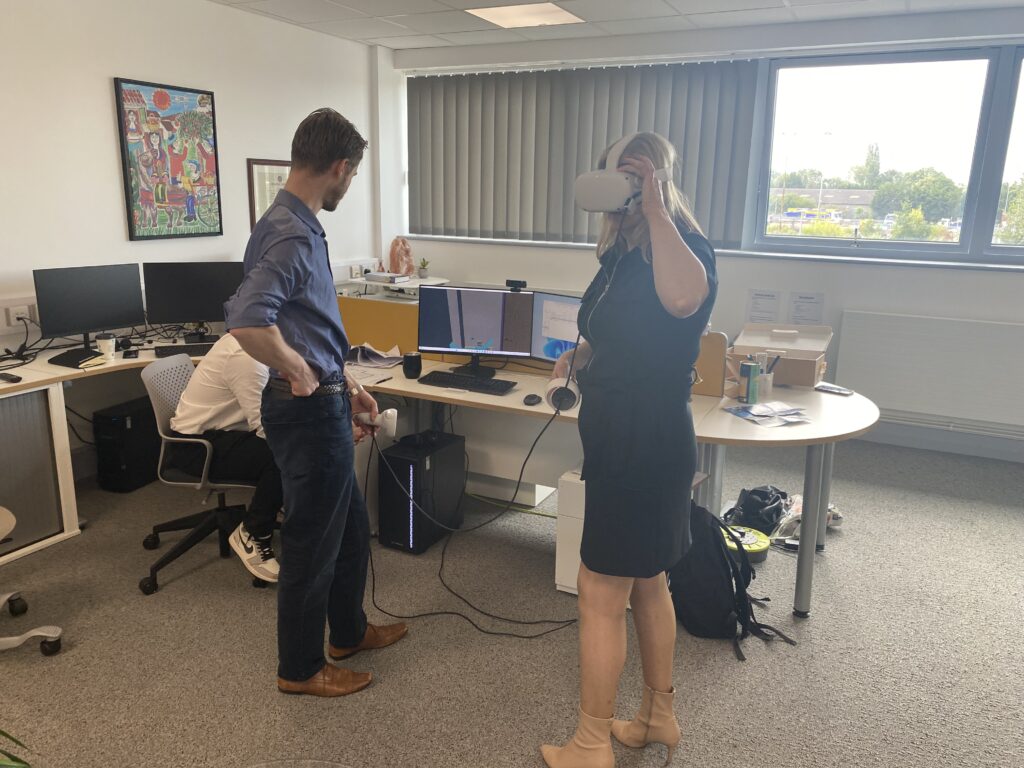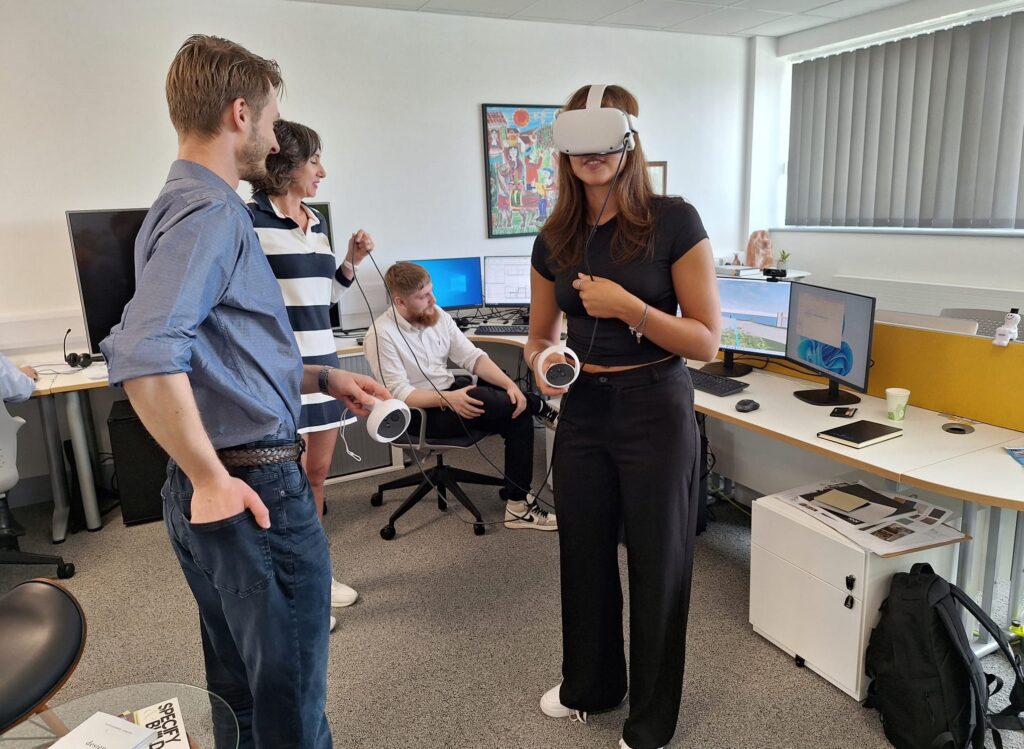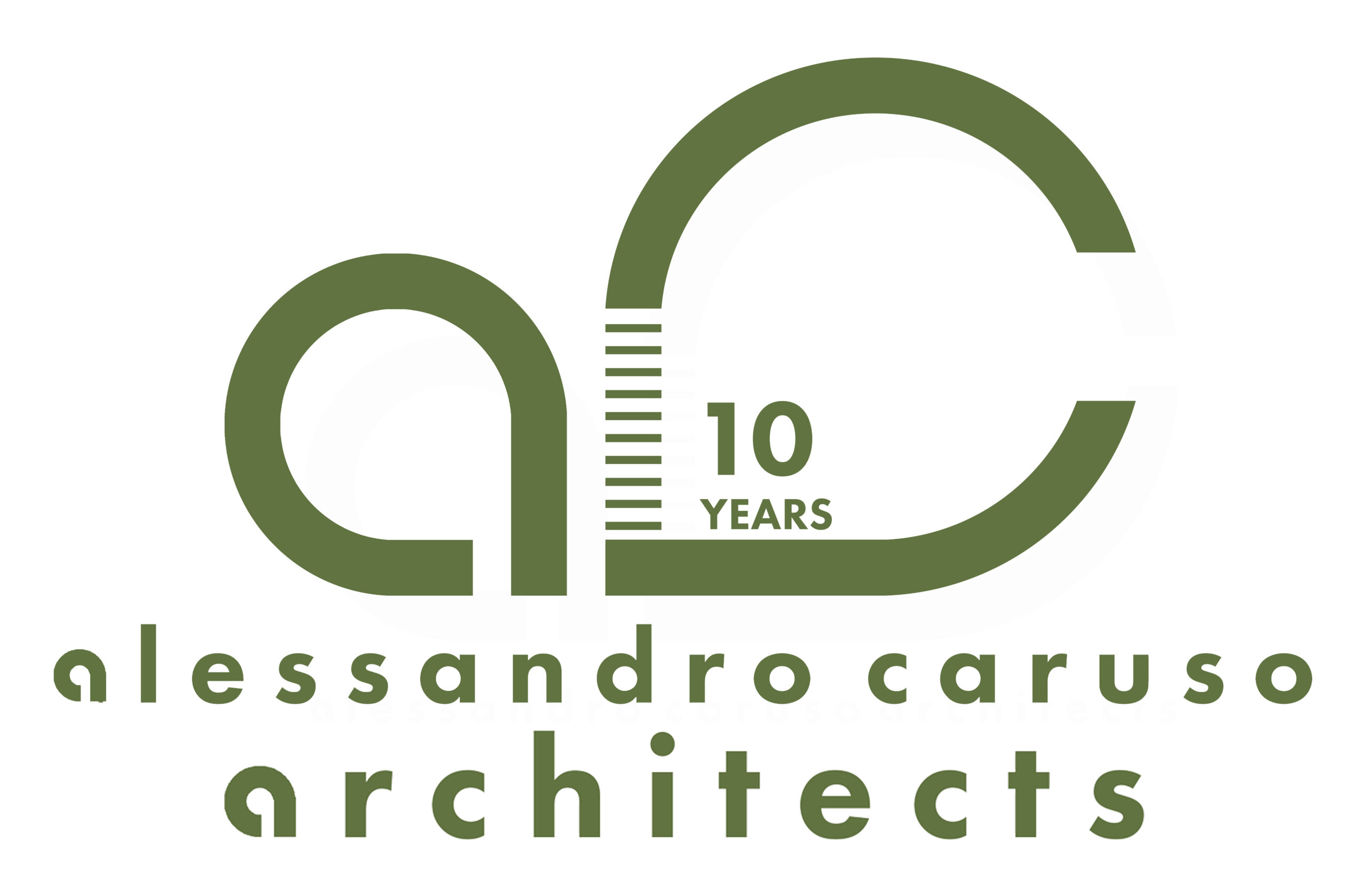In the evolving fields of architecture and interior design, staying ahead of technological advancements is crucial for delivering exceptional client experiences. One game-changing innovation is Virtual Reality (VR). VR has transcended its initial entertainment-based roots to become a valuable tool in architectural and interior design offices. Here’s how VR is revolutionising client experiences and transforming the design process.
ACA’s first project in virtual reality was the Community Diagnostic Centre (CDC) in Scunthorpe which was a great success. Now, we look forward to being able to bring more new projects to life.

1. Visualisation
One of the most significant benefits of virtual reality is its ability to create immersive visualisations. Traditional blueprints and 2D drawings can be difficult for clients to interpret and visualise. With VR, clients can experience and interact with a 3D representation of their future space, walking through rooms as if it were already built. This immersive experience provides a clear and tangible understanding of the project, ensuring that clients are fully engaged and satisfied with the design before construction begins.
2. Enhanced Communication
Effective communication between designers and clients is paramount to a successful project. Virtual reality bridges the gap between technical drawings and client comprehension. By visualising the design in VR, clients can provide immediate and precise feedback, leading to a more collaborative design process. This interactive dialogue helps in identifying and addressing potential issues early, reducing misunderstandings.
3. Decision-Making
Clients often find it challenging to make decisions based solely on 2D plans or even static 3D models. Virtual reality allows clients to explore different design options in a realistic environment, comparing materials, colors, and layouts on the spot. This hands-on approach makes it easier for clients to make informed decisions quickly and confidently, accelerating the overall design approval process.
4. Cost and Time Efficiency
VR technology can lead to significant cost and time savings. By identifying design flaws and potential problems in the virtual model, architects and designers can make adjustments before construction begins. This problem-solving aspect reduces the likelihood of expensive changes during the construction phase. Additionally, virtual reality accelerates the design approval process, allowing projects to move forward more swiftly and reducing project timelines.
5. Competitive Advantage
In a competitive market, offering innovative solutions can set a firm apart from its competitors. Incorporating VR into the design process showcases a commitment to cutting-edge technology and client satisfaction. It positions the firm as a leader in the industry, attracting tech-savvy clients and providing a unique selling point that can differentiate the business from others.
6. Improved Client Satisfaction
Ultimately, virtual reality enhances overall client satisfaction. The ability to experience a space before it is built reduces anxiety and increases confidence in the design process. Clients feel more involved and valued when their feedback is seamlessly integrated into the design. This positive experience fosters a strong client-designer relationship, leading to higher levels of client satisfaction and loyalty.
7. Customisation and Personalisation
VR allows for a high degree of customisation and personalisation in design. Clients can experiment with different design elements in real-time, tailoring the space to their exact preferences. This level of personalization ensures that the final design is a true reflection of the client’s vision, resulting in a space that feels uniquely theirs.
At the ACA office, we recently showed work experience students and newer members of the team our designs in virtual reality and this is what they had to say:
“Whilst 2D drawings are difficult to imagine, virtual reality allowed me to completely visualise how a blueprint can come to life which was amazing to see!” – Gabriella, Work Experience Student
“It was cool to see buildings that are being constructed in real life actually complete on VR.” – Roberta, Work Experience Student
“My first experience of using VR was amazing. It was incredible to see architectural concepts come to life in a 3D space. Having the VR has transformed the way we approach projects and offers endless possibilities for our future work” – Andrea, Office Administrator

The ACA team members have embraced virtual reality with enthusiasm, finding it to be an incredibly valuable tool in their design process. They enjoy exploring and interacting with their architectural creations in a fully immersive environment, which allows them to experience their designs from a client’s perspective. This hands-on approach with VR has fostered a collaborative atmosphere within the team, making design reviews more dynamic and engaging.
Keep up to date with ACA news.

